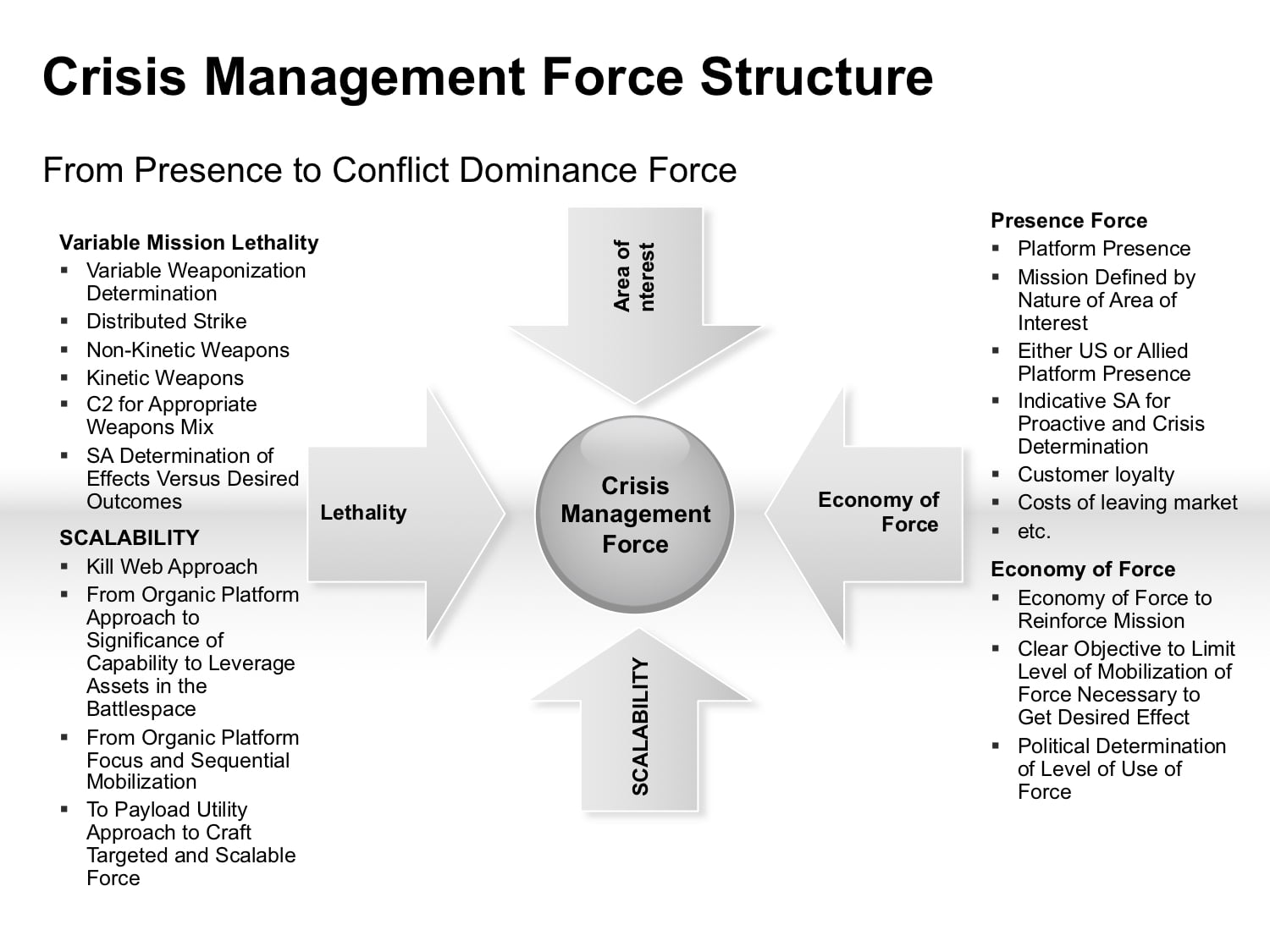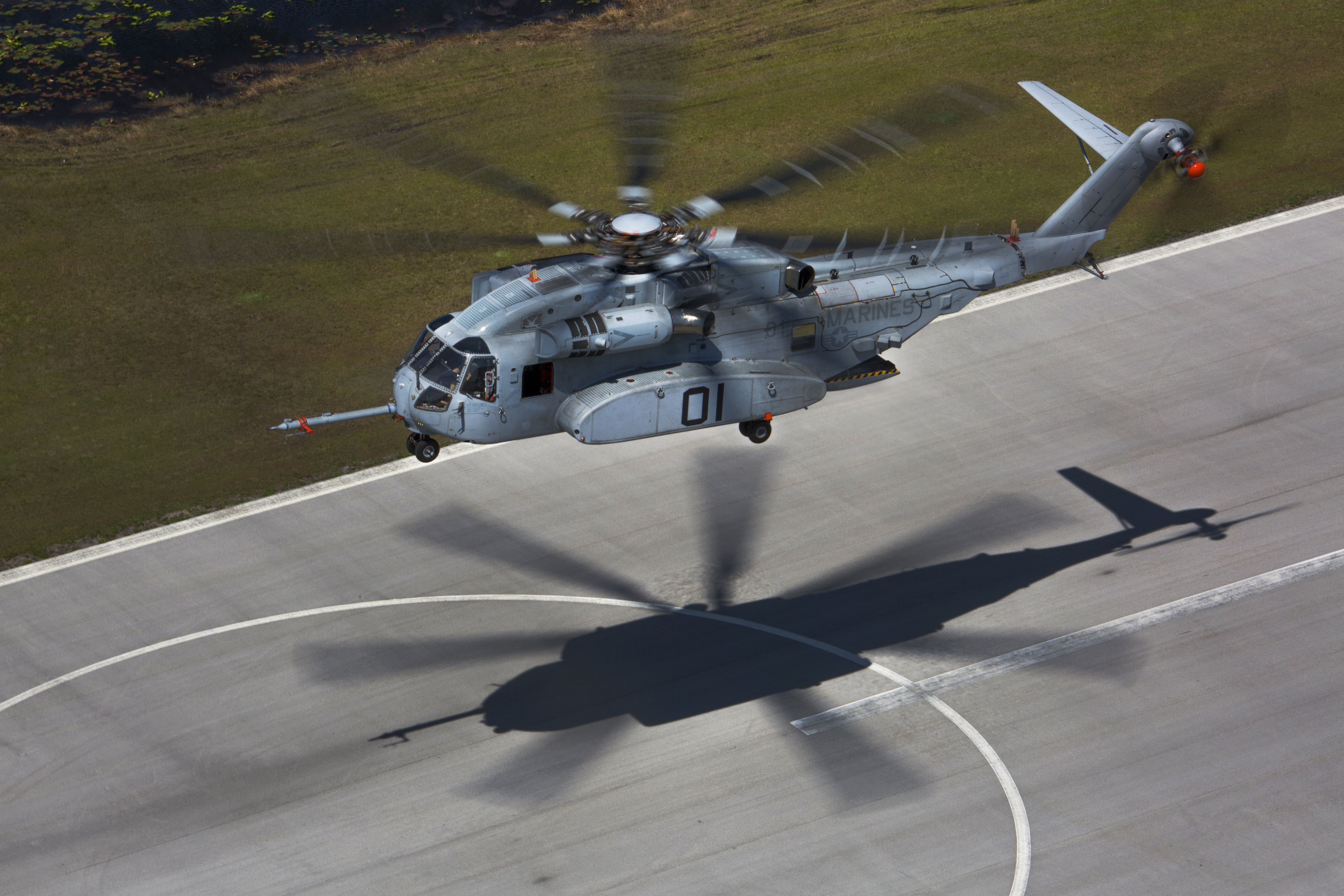The CH-53K provides a truly unique heavy lift capability.
Not only is it fully designed to operate in a wide variety of support missions from the sea base, but it is built as a digital aircraft from the ground up.
Given its digital systems, it can work with a variety of multi-mission assets to expand the range of support over a greater operating area compared to either the CH-53E or the Chinook.
It is designed from the ground up to carry heavier loads, three times that of the E with external lift.
It has automated flight controls which allow the flight crew to be part fully of any air combat insertion team, rather than having to be primarily be engaged with the challenges of flying a heavy lift helicopter.
The flight crew are part of the combat team throughout the mission, rather than having to focus largely on operating the aircraft.
The USMC clearly needs this aircraft now, and work its integration into the fleet.
And unlike the experience of Osprey Nation, the CH-53K nation have the advantage of a significant jump on the way ahead with the sustainability of the aircraft.
The Marines have learned from the earlier Osprey experience.
They have set up a logistics team in New River working through from a practical point of view, how to implement and improve the maintainability of the aircraft from the ground up.
In the context of a strategic shift from the land wars of the Middle East to higher tempo crisis management operations which can involve conflict with peer competitors, it is hard to understand how any serious defense analyst would want to compare this aircraft with that of the Chinook.
If the Pentagon is serious about the National Security Strategy, it is time to take seriously the shift from the land wars to full spectrum crisis management.
Unfortunately, when acquisition debates occur, considerations of the nature of the strategic shift is not being taken seriously enough and comparisons are sought with new combat systems built for the new strategic environment with older systems which have operated for the past 20 years in the counter-insurgency wars.

If the need to equip the force for the new strategic situation, it is difficult to understand why the CH-53K would not be considered a key stakeholder in the new force critical to operate in full spectrum crisis management.
It is good news then that the US Navy has just awarded a contract to Sikorsky to build additional Ch-53ks.
In a recent press release by Naval Air Systems Command dated May 17, 2019:
WASHINGTON (NNS) — The Naval Air Systems Command awarded on May 17 a $1.3 billion Low Rate Initial Production (LRIP) Lots 2 and 3 contract for 12 aircraft to Sikorsky, a Lockheed Martin company, Stratford, Conn. for the U.S. Marine Corps CH-53K King Stallion.
“The Marine Corps is very appreciative of the efforts by the Navy and our industry partners to be able to award the LRIP 2/3 contract,” said Lt. Gen. Steven Rudder, Deputy Commandant for Aviation. This is a win for the Marine Corps and will secure the heavy-lift capability we need to meet future operational requirements and support the National Defense Strategy. I’m very confident in the success of the CH-53K program and look forward to fielding this critical capability.”
The most powerful helicopter in the Department of Defense, the CH-53K King Stallion is a new-build helicopter that will expand the fleet’s ability to move more material, more rapidly throughout the area of responsibility using proven and mature technologies. The CH-53K is the only aircraft able to provide the Marine Corps with the heavy-lift capability it needs to meet future operational requirements for the vertical lift mission.
“This contract award reflects close cooperation and risk sharing between the Government and industry teams to deliver critical capabilities to the Marine Corps,” said James Geurts, Assistant Secretary of the Navy for Research, Development and Acquisition. “Working with our industry partners, the team ensured that solutions for technical challenges are incorporated into these production aircraft. This reflects the urgency to ensure we deliver capabilities necessary to support the Marine Corps and the Department of Navy’s mission, while continuing to drive affordability and accountability into the program.”
Designed and demonstrated the lift capability of nearly 14 tons (27,000lbs/12,247 kg) at a mission radius of 110 nautical miles (203 km), in Navy high/hot environments, the CH-53K lifts triple the baseline CH-53E lift capability. The CH-53K has proven the ability to lift up to 36,000lbs via the external cargo hook. The CH-53K will have an equivalent logistics shipboard footprint, lower operating costs per aircraft, and less direct maintenance man hours per flight hour. The combination of unmatched heavy-lift and range, fly-by-wire flight controls, with an advanced, integrated communications suite will provide the Marine Corps with the operational flexibility necessary to gain and, more importantly, sustain a tactical edge on the battlefield.
And an article by : Megan Eckstein of USNI News published as well on May 17, 2019 provided further insight with regard too the decision.
In a Friday news release, Navy and Marine Corps leadership expressed confidence in the program despite the challenges it has faced over the past year or so.
“The Marine Corps is very appreciative of the efforts by the Navy and our industry partners to be able to award the LRIP 2/3 contract,” Lt. Gen. Steven Rudder, the deputy commandant for aviation, said in a news release.
“This is a win for the Marine Corps and will secure the heavy-lift capability we need to meet future operational requirements and support the National Defense Strategy. I’m very confident in the success of the CH-53K program and look forward to fielding this critical capability.”
“This contract award reflects close cooperation and risk sharing between the Government and industry teams to deliver critical capabilities to the Marine Corps,” James Geurts, assistant secretary of the Navy for research, development and acquisition, said in the release.
“Working with our industry partners, the team ensured that solutions for technical challenges are incorporated into these production aircraft. This reflects the urgency to ensure we deliver capabilities necessary to support the Marine Corps and the Department of Navy’s mission, while continuing to drive affordability and accountability into the program.”
In a House Armed Services Committee hearing earlier this spring, Daniel Nega, the deputy assistant secretary of the Navy for air programs, told lawmakers on the tactical air and land forces subcommittee that the upcoming contract would put the onus on Sikorsky to address remaining design flaws and fix any other problems that come up during the remainder of testing.
“The flight envelope’s been tested to the corners; Gen. Rudder talked about how we’ve sort of wrung it out,” he said at the hearing. “There’s a relatively low risk that anything major will be found. However, if nuisance issues come along, we are not going to give those nuisance issues to the Marines, and the Navy and Marine Corps team is not going to accept the full risk of that. So the risk concurrency between the development and the production, that overlap is going to be taken care of.”
Asked how the contract awarded today would do that, Hernandez told USNI News that “the production contract is structured to ensure a deployable configuration is delivered for fleet use. All known issues are included in the contract, additionally the contract provides provisions for any new issues discovered during flight testing. This will ensure appropriate shared risk between the government and industry.”
The article also discussed upcoming sea trials for the CH-53K which will take the lessons learned at New River with regard to maintainability to sea.
Initial operational test and evaluation is set to begin in early 2021, which would allow the Marine Corps to declare initial operational capability in time for the first deployment in 2023 or 2024.
Though work still remains to be done, Paul Fortunato, director of Marine Corps business development at Sikorsky, and John Rucci, the company’s senior experimental test pilot for the CH-53K, said the new helicopter has already proven it is easier to operate and maintain than its predecessor and that its warfighting capability surpasses the requirements for the aircraft.
Rucci said pilots have total trust in the fly-by-wire cockpit, which essentially lands the helicopter on its own – meaning the pilots can focus on the mission at hand or evading a threat, or can safely land in a sandstorm or other degraded conditions.
And Fortunato said the helo was built with easy maintenance in mind: fewer tools are required, the all-electronic maintenance documents include graphics that maintainers can zoom in on and rotate to help them maintain or repair parts, the logistics footprint is smaller and easier for deployments aboard amphibious ships. The design even includes putting electronic components in “backwards,” meaning the connections are facing outwards and easily accessible when maintainers take off a panel, instead of the wiring being in the back like usual and requiring a Marine to use a mirror to see what is going on behind the component.
At Marine Corps Air Station New River in North Carolina, Falk said, Marines are using one of the system demonstration test article (SDTA) helicopters to work out any remaining issues in the maintenance manuals and to start learning more about how to fix and sustain the new helo.
“There’s Marines crawling around that aircraft, taking it apart, putting it back together again, running the maintenance procedures, and basically using what we developed in order for them to be able to maintain the aircraft,” Falk said. “So the opportunity for us before we start delivering production aircraft, we can learn from that, we can feed all that back, we can improve our maintenance procedures and basically when the aircraft is deployed deliver a much higher-quality, more efficient set of maintenance instructions. Plus, you’ve got Marines that have already used it, done it, learned.”
For the complete article, see the following:
Navy Awards Sikorsky $1.13B for Next 12 CH-53K Heavy-Lift Helicopters


